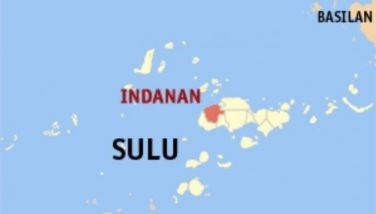Talakatak: Phl's version of European chestnut
MANILA, Philippines - Did you know that the Philippines has its version of the European chestnut or kastanyas?
It’s known by different names among the country’s regions.
To the people of Quezon province, for instance, it is called talakatak. It is simply kastanyas to Ilocanos in Nueva Vizcaya.
Scientifically named Catanopsis philippinensis, the local chestnut tree feels at home in the uplands.
Philippine chestnut has been reported to be endemic in some forest parts of Luzon, Leyte, Samar and Basilan.
Specifically in Luzon, it has been part of the forest landscape of Quezon.
Dr. Jose Sargento, a forest scientist of the University of the Philippines Los Baños, once told this writer that a few Philippine chestnut trees can be found at the Makiling Botanic Gardens and in some parts of the UPLB campus.
Also, it is just a matter of time before it will be known whether it can also thrive in the lowlands.
In an orchard in the Laguna town of Calauan, about 80 kilometers southeast of Manila, a few Philippine chestnut trees are lushly growing.
In a year or two, these trees are expected to bear fruit, the orchard owner, retired UPLB scientist Dr. Roberto Coronel, told this writer two years ago.
Sourced from the UP-Laguna land grant in Siniloan town, the planting materials were provided to Coronel by another UP Los Baños scientist, Dr. Gil Villancio, for him to try if the Philippine chestnut could thrive under specific Philippine lowland conditions. Initial results indicated that they did.
The kastanyas trees were among the 210 exotic and indigenous species nurtured over the years by Coronel on the fruit farm that he had worked hard to establish to showcase prized trees for scientific and educational purposes.
Both European and Philippine chestnut species belong to the plant family Fabaceae. Also, their fruits are similar in taste, shape and color. The local variety grows to as high as 28 meters.
Fresh and roasted Philippine kastanyas used to be readily available in the markets of Nueva Vizcaya and Quezon, especially during Christmas.
But the Philippine Council for Agriculture, Forestry and Natural Resources Research and Development (PCARRD) noted that the local chestnut tree population has declined due to the cutting of the trees for various purposes and over-dependence of fruit gatherers on trees in the forest.
Many of the local kastanyas trees are also dying of old age.
Thus, PCARRD underscored the need to protect those still in the wild with the help of local government units and communities due to their importance to the rural economy, particularly during Christmas.
- Latest
- Trending































